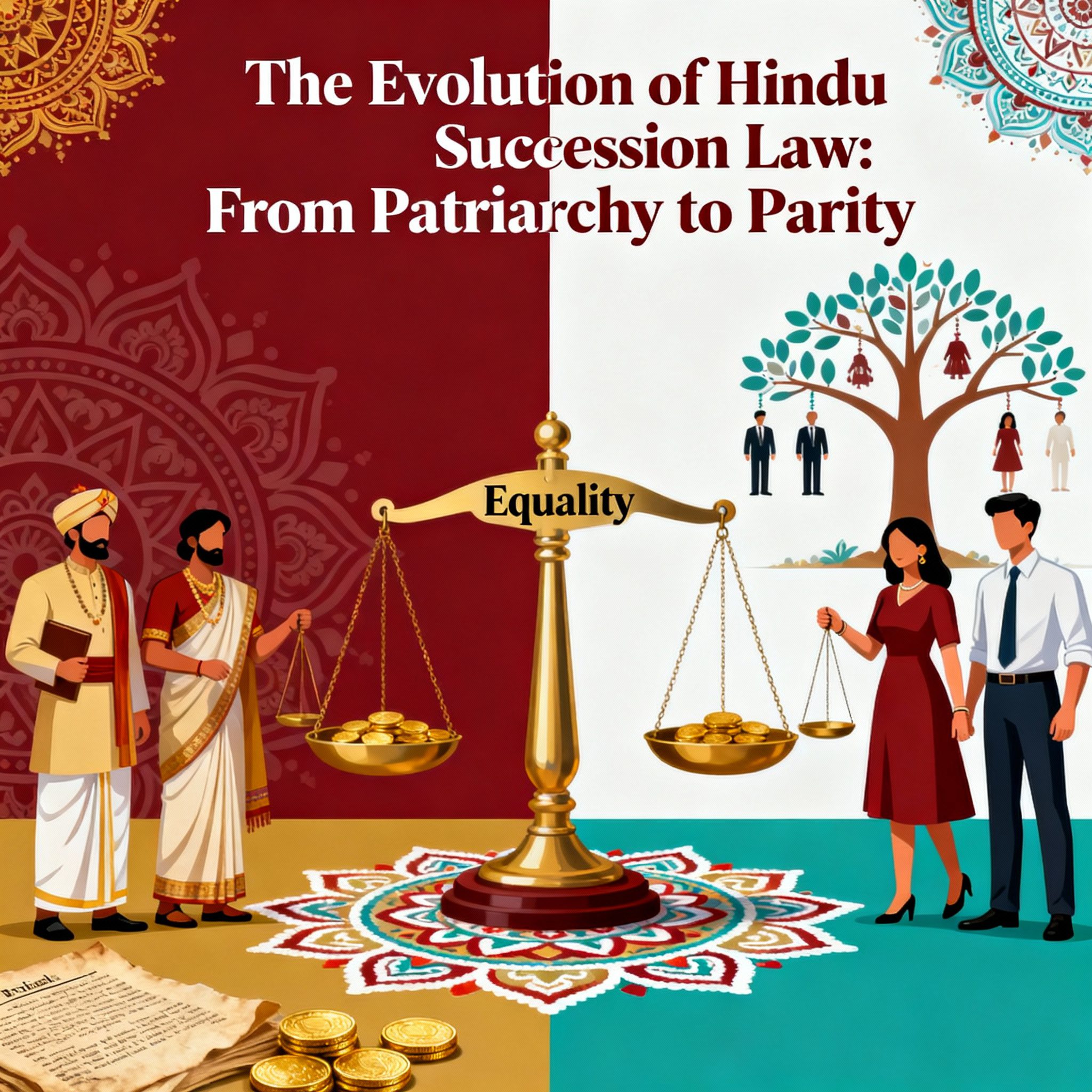Hindu succession law has witnessed a dramatic transformation over the last century, marked by its journey from deeply entrenched patriarchy to progressive gender equality. Rooted in ancient scriptures and traditional customs, the Hindu law of inheritance historically relegated women to a subordinate position. However, several waves of legislation have challenged and changed that landscape, making women’s property rights a cornerstone of reform in modern India.
Early Legislative Steps Towards Gender Equity
The Hindu Women’s Right to Property Act, 1937
Long before comprehensive reform, the status of women in inheritance matters saw a critical shift with the Hindu Women’s Right to Property Act, 1937. For the first time, widows were given the right to share in their late husband’s property alongside sons. This was a major departure from the old doctrine of survivorship, under which a deceased coparcener’s share passed only to other male members.
However, the rights given to widows were limited—they became “limited owners,” meaning they could not fully dispose of or sell the property. The Act also inadvertently created uncertainty, particularly regarding its impact on the joint family system, highlighting the need for comprehensive, unified reform.
The Hindu Succession Act, 1956: Laying the Foundation for Equal Rights
With independence, Indian lawmakers set out to systematically overhaul Hindu personal law. The Hindu Succession Act, 1956 (HSA), which came into force on June 17, 1956, aimed to provide a uniform and modern law of inheritance for all Hindus, overriding old customs and texts inconsistent with its principles.
Key Reforms:
- Abolishing the Woman’s Estate (Section 14):
Property held by Hindu women became their absolute property, giving them full ownership and freedom to gift or will property as they saw fit—an unprecedented move away from women’s economic subservience. - Daughters, Widows, and Mothers as Heirs:
The Act placed these female relations on par with sons as “Class I heirs,” ensuring they inherited equally. Inheritance rights were now unaffected by marital status or the social standing of daughters. - Erosion of the Rule of Survivorship:
Section 6 of the HSA qualified the ancient Mitakshara doctrine, which favored survivorship among male members. If a coparcener died with surviving female Class I heirs, his share was notionally partitioned and devolved by succession instead. - Empowering Testamentary Freedom:
For the first time, Hindu men could dispose of their interest in joint family property by will. - Acceptance of Children from Void Marriages:
Legitimacy and inheritance rights were granted to children of void/voidable marriages, further broadening gender-neutral succession. - Lifting Inheritance Disabilities:
No one could be disqualified from inheriting property due to disease or deformity.
Unresolved Issues:
Despite these advances, major disparities persisted:
- No Coparcenary Rights for Daughters:
Daughters still did not become coparceners at birth like sons—in other words, they had no birthright to joint family property. - Gendered Succession Schemes:
Procedures for the inheritance of men and women’s property remained unequal, occasionally causing a woman’s estate to revert to her father’s or husband’s family. - Doctrine of Pious Obligation Remained:
Sons could still be made responsible for their father’s debts. - Section 23 and the Dwelling House:
Married daughters could neither seek partition of the family home nor live there if male heirs were present. - Exclusion of Agricultural Land:
The HSA did not initially apply to agricultural holdings, subjecting them to state laws—many of which discriminated against women.
State Initiatives: Early Experiments in Equality
Recognizing the Act’s limitations, several states took the lead and amended the HSA before central reforms. Kerala (1975) abolished the joint family system entirely. Andhra Pradesh (1985), Tamil Nadu (1989), Maharashtra (1994), and Karnataka (1994) gave unmarried daughters the same coparcenary rights as sons.
The Hindu Succession (Amendment) Act, 2005: A Revolutionary Leap
The Hindu Succession (Amendment) Act, 2005 (in effect from September 9, 2005), heralded a new era of gender justice in Hindu family law.
Game-changing Reforms:
- Daughters as Coparceners by Birth:
Daughters gained the same rights and liabilities as sons in joint family (Mitakshara) property, regardless of marriage date—making them equal partners from birth. - Right to Seek Partition and Act as Karta:
Daughters now possess the power to demand partition and even act as the Karta (manager and decision-maker) of the joint family if they are the eldest. - Unrestricted Testamentary Powers:
Female coparceners can will away their undivided share, just as sons can. - End of Survivorship Rule:
Property now devolves through succession (by inheritance or by will), even for joint families—abolishing the male-only succession rule. - Abolition of Pious Obligation:
Sons are no longer automatically liable for their fathers’ debts for those incurred after 2005. - Removal of Disabling Sections:
Section 23 (dwelling-house discrimination) and Section 24 (relating to inheritance rights of remarried widows) were deleted, fortifying equal rights for female heirs. - Expansion of Class I Heirs:
More female relatives and their children were included among the primary legal heirs. - Clarity Amidst Change:
The Amendment specified that partitions or transfers made before December 20, 2004, remain valid, and all partitions must be by registered document or decree after this date. Courts have since interpreted these rules in the spirit of equality, giving genuine effect to reform rather than loopholes.
Conclusion: Moving Towards True Equality
The journey of Hindu succession law is a testament to India’s evolving constitutional values and growing commitment to gender equity. The 2005 Amendment is especially historic, placing daughters on an equal footing with sons and breaking the shackles of centuries-old patriarchy.
While some practical and interpretational challenges remain—such as harmonizing central and state laws, extending reforms to agricultural land, and ensuring grassroots implementation—the framework today holds far greater promise for millions of women who, for generations, were denied their rightful inheritance.
Today’s Hindu succession law stands as a powerful example of how tradition, when combined with legislative vision and judicial activism, can transform into a force for equality and social justice.

